
The same partnership that made the current-model Ford Ranger and Volkswagen Amarok utes ‘twins under the skin’ is responsible for the new VW Transporter van, which shares engines and underpinnings with the Ford Transit.
That, in part, explains why VW has taken a fresh approach to powertrains for this seventh generation, simplifying its diesel lineup for the 2025 Transporter launch and introducing EV and PHEV variants in mid-2026.
But what will Volkswagen’s loyal buyer base make of this transformation? Will a VW interior and myriad customisation options be enough to keep them from looking elsewhere?
The new VW Transporter van range offers a mix of wheelbases and drivetrains, with six variants in total. A manual version is no longer available.
Kicking things off is the short wheelbase (SWB) diesel TDI 125kW FWD for $58,590. An AWD version of same with VW’s 4Motion system costs $62,590. In long wheelbase (LWB) form, the FWD model starts at $60,590 and the AWD option is $64,590. All these run the same 2.0-litre turbo-diesel engine mated to an eight-speed automatic gearbox.
All-new to the Transporter lineup is a battery electric drivetrain with rear-wheel drive, the e-Transporter. The SWB starts at $83,590 and the LWB is priced at $85,590.
In the diesel van market, the Transporter finds itself up against longtime rivals such as the Ford Transit Custom (from $56,590), Hyundai Staria Load ($46,740), LDV Deliver 7 ($46,305), Toyota Hiace ($51,880) and Renault Trafic ($49,990).
In the electric space, the Transporter’s key competitor will be the Ford E-Transit, which offers the same (albeit not as powerful) motor for about $5000 less. Also in the mix are the, LDV eDeliver 7 (starting at $63,990 drive-away for ABN holders), Peugeot E-Expert (from $79,990 before on-roads), and smaller Volkswagen ID Cargo (from $79,990 before on-roads).
Additional variants will arrive in 2026, including a plug-in hybrid van (171kW and 205Nm) with up to 60km of electric range, a five-seater Crewvan (available in SWB and LWB and all three powertrains), and LWB cab-chassis e-Transporter with six seats.
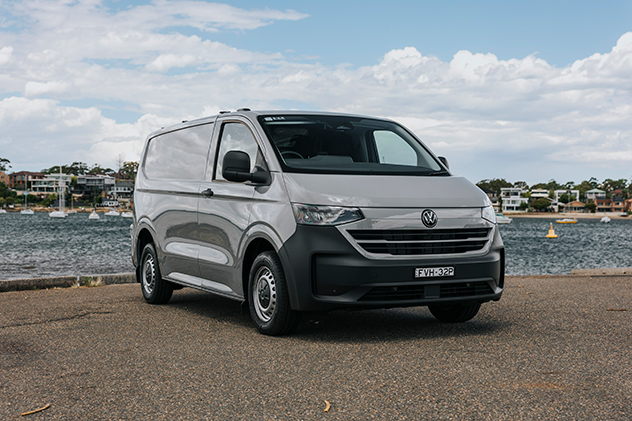


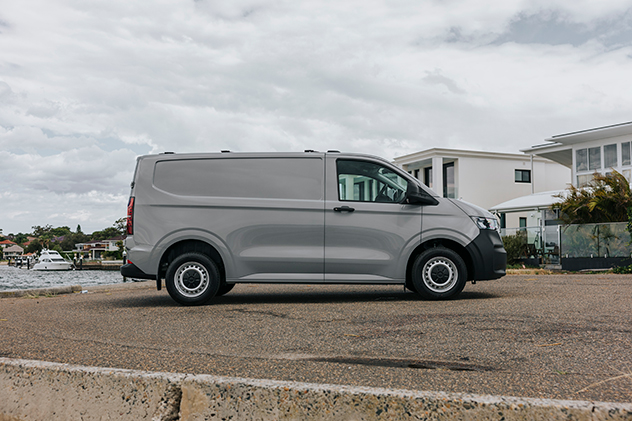



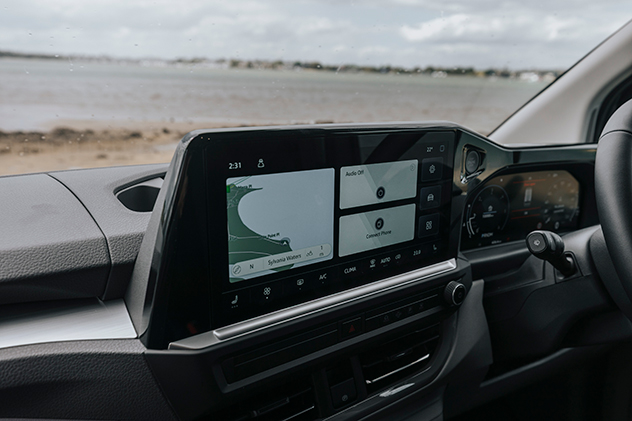
The approach to the interior is utilitarian (as expected in a commercial van) and hard plastics abound. The dashboard styling and grey/black colour scheme aren’t disagreeable, though, and the steering wheel is a nice size and wrapped in leather. A large driver display sits behind the steering wheel, and a central touchscreen sits proud within easy reach from the driver’s seat.
The seats are clad in hard-wearing cloth and well-padded (they’re more comfortable, in fact, than many VW Group passenger cars, which tend toward firmness) and good for a full day’s deliveries. The single row seats three abreast and the middle seat, while on the narrower side, will accommodate a fighting-weight tradie.
Touchscreens notwithstanding the interior is pretty spartan, although it does have a pop-out cup holder and ample storage in the door pockets. There is also a large storage cubby in the top of the dash (where couriers like to keep receipts and McDonald’s rubbish), although the digital screens form a sort of rampart that restricts access to it – you’d want to the van to be stationary to rummage around in it safely.
The VW Transporter has two glove boxes (the second in the top of the dash on the passenger’s side) and the gear selector is now on the right-hand side of the steering column, which frees up space… although ‘space’ is the operative word, as there’s no centre console and an armrest is optional.
Open the tailgate and the first thing you notice is how high it goes up – the Transporter is 2062mm tall and any tradie under five-foot-seven will likely have to jump to close it. Barn doors ($690) may be a good investment if you’re vertically challenged or need to open the tailgate in confined spaces. The Transporter’s cargo area does have a low load lip, which makes it easy to step into.
Both the SWB and LWB are up 60mm in length over the previous generation, for a loading length of 2600mm and 3000mm metres respectively and total load volumes of 5.8 and 6.8 cubic metres.
— Kris Ashton

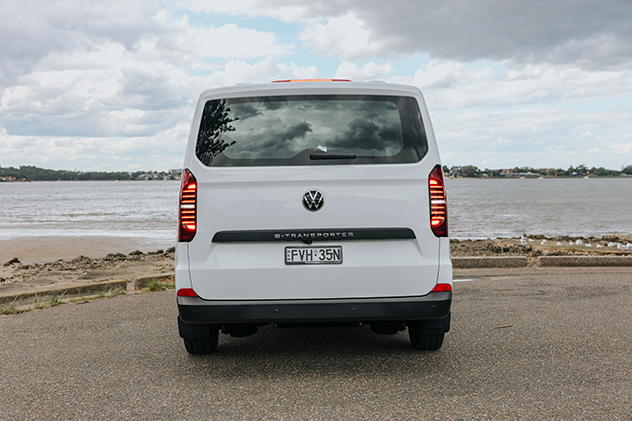

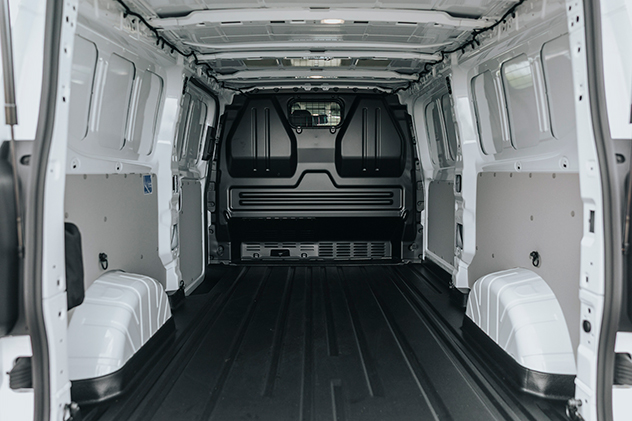

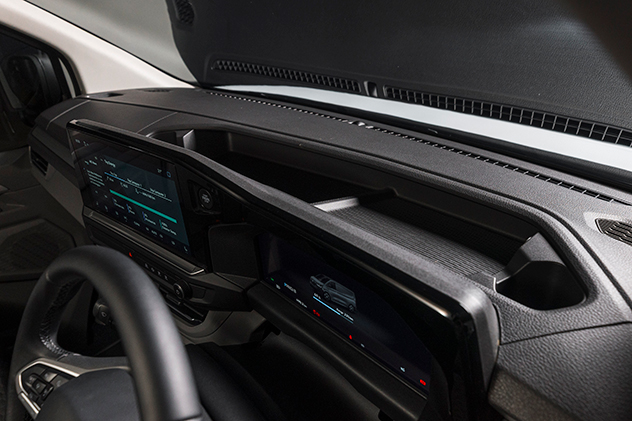
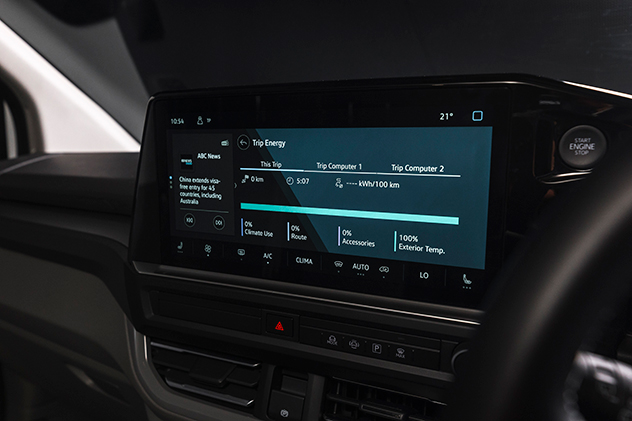
The VW e-Transporter’s interior presentation is identical to its diesel sibling’s, right down to the starter button. The only real deviation is a B button inset into the gear shifter to turn on/off the regenerative braking.
Brake regeneration on the EV is quite strong, although it probably falls slightly short of one-pedal driving as VW claims.
The drive experience is remarkably similar to the diesel’s, at least in ride and handling. The additional weight from the battery is detectable in a somewhat harsher response to bumps, but as to steering and body roll the diesel and EV could almost be the same vehicle.
The key difference, of course, is throttle response and acceleration. Every one of the e-Transporter’s 415Nm is available at an instant and, unladen at least, the van offers remarkable straight-line acceleration. It’s also a heck of a lot quieter, making the outside world seem loud by comparison.